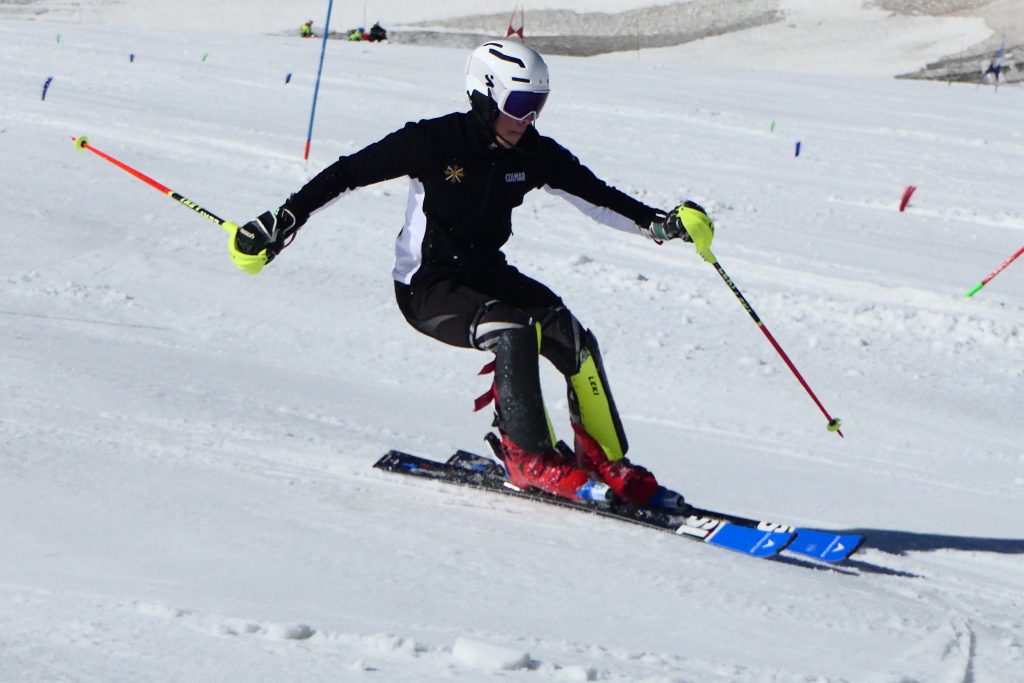Best run of the day was the last one – where the body remained relatively well centred – and half the poles went flying.
Huge problem though is often when the pole is cleared the arm comes flying backwards – it shouldn’t move at all it’s the pole that should move. It’s one thing reaching for ground contact and feedback with the hand guard – but each time the arm comes back – weight comes back and some degree of hip rotation will occur blocking the turn exit – (anticipation).
Okay. Let’s just call those “deck chair” turns. They can serve two purposes at best – survival moves or early retirement moves – on a deck chair with a cool drink. Well back in the ski boots here – very tiring on the hip flexors.

Speed skaters have the upper body tilted forward at the hip joint. All the power comes from the body and so there is dynamic use of the arms – it’s natural. However in speed skating there are no sudden switches of direction – which is what ski racing is all about. In skiing the arms have to be tamed and trained so as not to interfere. Their action has to be properly independent.
The feet coming forward should be early in the turn – not at the end due to leg retraction. The body needs to be tilted at the hip joints bringing the shoulders forward. When the hip and knee are extended to power the skier(skater) there is a necessary forward motion of the foot – it isn’t a “pushing of the foot forward” just to get it in front – it’s part of a skating function. In skating it happens because the the skate is directed at an angle to the overall direction of travel. In skiing this happens because the body is displaced at an angle to the direction of the ski. Even if the skier is not generating power this “skate” is necessary to be dynamic instead of passive.
Once the body is centred over the skis (and the arms are tamed) and the stance forward and assertive – then we can work on real agility because there is freedom to act and react.



